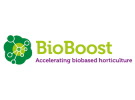On 18 September, Alderman Albert Abee of the municipality of Westland presented the first copy of the brochure 'From waste to income source! Better use of horticultural waste of the world!' to vice governor Adri Bom-Lemstra of the province of South Holland. The brochure explains what is important when it comes to reusing horticultural residual flows and why.
Examples of new applications are discussed, but the brochure also mentions the obstacles and what is needed to overcome them. The purpose of this brochure is to inform government and stakeholders about key elements of a strategy that was developed by BioBoost project partners to identify and reduce wasteful practices and to develop economically viable alternatives.
Based on the work in the BioBoost project and interactions with industry stakeholders, the BioBoost partnership has identified the following four key elements for accelerating a biobased and circular horticulture.
Clever communication and collaboration
The bioeconomy cannot be applied from the supplier side into society unless society knows what constitutes a bioeconomy and can both understand its role and welcome its products and services. Vice versa, suppliers within the value chain need to see the advantages and the perspectives. You could say a push and pull approach is necessary: push from supplier side, pull from consumer side. A true change can only made through the participation of all players in the production and value chain and by creating the right conditions for involvement of all stakeholders, including public authorities. Added value should be equally divided along value chain so that economic feasibility is assured for all actors involved.
Breaking the barriers
Currently, there are numerous obstacles to embracing a more circular bioeconomy; such as in legislation, technology, social perception and financing. These must be tackled to enable biobased circular within horticulture so that handicaps, such as cost will help to facilitate moves from present use of fossil reserves and wastage based practices. It is of the utmost importance to put removal of these obstacles at the top of the agenda and to find solutions.
Creating examples by facilitating entrepreneurs with innovations
To change existing practices and to substantiate the advantages of a biobased and circular horticulture (in the long run) good examples are crucial to demonstrate possible routes to valorisation and sustainable practices; and to inspire to development of ideas into action. Targeted financial and knowledge support of entrepreneurial companies is necessary to create these examples and to increase the range of options.
Improving the accessibility of knowledge and information
Many good examples already exist, including valuable information, but it is often hard to find; when “we can’t see the wood for the trees”. Improving the potential to find and share information and to provide it in a more bespoke form for the industry is crucial to accelerate the necessary transition.
The brochure can be found at the BioBoost website under publications.
For more information: BioBoost
BioBoost
www.bioboosteurope.com
